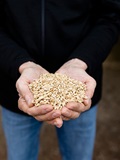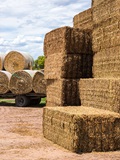Central West NSW
20 May 2020
| Date | CW 23 | CW 22 | CW 5YA |
|---|---|---|---|
| 06-Jan-23 | 264 | 200 | 307 |
| 13-Jan-23 | 275 | 200 | 298 |
| 20-Jan-23 | 285 | 200 | 296 |
| 27-Jan-23 | 293 | 200 | 307 |
| 03-Feb-23 | 303 | 200 | 307 |
| 10-Feb-23 | 318 | 190 | 300 |
| 17-Feb-23 | 319 | 190 | 300 |
| 24-Feb-23 | 320 | 190 | 300 |
| 03-Mar-23 | 325 | 190 | 294 |
| 10-Mar-23 | 333 | 190 | 290 |
| 17-Mar-23 | 333 | 190 | 292 |
| 24-Mar-23 | 333 | 190 | 292 |
| 31-Mar-23 | 338 | 195 | 296 |
| 07-Apr-23 | 343 | 195 | 298 |
| 14-Apr-23 | 343 | 195 | 298 |
| 21-Apr-23 | 343 | 195 | 303 |
| 28-Apr-23 | 348 | 198 | 314 |
| 05-May-23 | 348 | 198 | 315 |
| 12-May-23 | 348 | 199 | 316 |
| 19-May-23 | 348 | 200 | 319 |
| 26-May-23 | 348 | 200 | 320 |
| 02-Jun-23 | 350 | 200 | 327 |
| 09-Jun-23 | 350 | 204 | 327 |
| 16-Jun-23 | 348 | 208 | 327 |
| 23-Jun-23 | 345 | 208 | 327 |
| 30-Jun-23 | 343 | 208 | 341 |
| 07-Jul-23 | 330 | 208 | 342 |
| 14-Jul-23 | 318 | 208 | 342 |
| 21-Jul-23 | 305 | 208 | 342 |
| 28-Jul-23 | 305 | 208 | 343 |
| 04-Aug-23 | 305 | 208 | 344 |
| 11-Aug-23 | 305 | 208 | 355 |
| 18-Aug-23 | 303 | 208 | 375 |
| 25-Aug-23 | 300 | 208 | 374 |
| 01-Sep-23 | 300 | 210 | 367 |
| 08-Sep-23 | 210 | 367 | |
| 15-Sep-23 | 200 | 343 | |
| 22-Sep-23 | 200 | 338 | |
| 29-Sep-23 | 200 | 335 | |
| 06-Oct-23 | 200 | 325 | |
| 13-Oct-23 | 200 | 307 | |
| 20-Oct-23 | 200 | 305 | |
| 27-Oct-23 | 200 | 304 | |
| 03-Nov-23 | 200 | 305 | |
| 10-Nov-23 | 200 | 306 | |
| 17-Nov-23 | 200 | 306 | |
| 24-Nov-23 | 200 | 305 | |
| 01-Dec-23 | 209 | 304 | |
| 08-Dec-23 | 218 | 306 | |
| 15-Dec-23 | 225 | 305 | |
| 22-Dec-23 | 230 | 306 | |
| 29-Dec-23 | 253 | 316 |
Notes:
Change in price is the change since the last report. Hay quoted is sourced and delivered locally, GST exclusive unless stated otherwise. It should be noted that local prices quoted may not be the cheapest available, sourcing it from another region may be more affordable, and buyers are encouraged to evaluate all options. Prices are indicative to a mid-range shedded product, and based on the best indication of market value at the time of reporting. It should be noted there is a wide variation in quality of hay, prices for a mid-range product will not reflect the weighted average of trade. Prices will naturally vary based on the product quantity and quality, buyer/seller relationship and the size of the trade.The hay report has been commissioned by Dairy Australia to provide an independent and timely assessment of hay markets in each dairy region. This report is created using data provided by the Australian Fodder Industry Association (AFIA). It should be remembered that actual prices may vary for quality or other reasons. Whilst all reasonable steps have been taken to ensure the accuracy of the information contained in this report, Dairy Australia disclaims all liability to the fullest extent permitted by Australian law for any inadvertent errors and for any losses or damages stemming from reliance upon its content. Dairy Australia recommends all persons seek independent advice and, where appropriate, advice from a qualified advisor before making any decisions about changes to business strategy.
Commentary
- Light to moderate rainfall across the region this week, with falls of 15 – 30mm of rain recorded.
- Many paddocks still have water lying on them, making assessment of the possible damage and ability to resow where needed difficult.
- There is a fair amount of concern regarding the possibility of Foot and Mouth Disease (FMD) making it to Australia. The impact to livestock and the follow-on to growers would be substantial. Information about the Australian Vetplan and preparedness is available at https://animalhealthaustralia.com.au
- The sorghum harvest which was put on hold in some parts of the region due to the heavy rains is commencing again, though the crop will need extensive drying to avoid being downgraded. Sowing in those regions is on hold due to the ground conditions and the focus on getting off as much of the crops as is viable.
- Around Parkes some millet crops sown in late March are coming up well with the rains and conditions good for growth. Wheat crops are being resown in the area, with some reports of a shortage of seed for high yield varieties such as Sunmaster.
- Pastures of oats and canola mix has bulked up well however the ground is very wet underfoot making grazing difficult. Some sheep farmers are looking to relocate their ewes where grazing canola has been destroyed by waterlogging.
- Green feed is going strong in areas without waterlogging. Ryegrass, graze and grain canola and radish giving a number pasture options for sheep and cows in those areas.
- Mouse activity in and around sheds continues to be reported, with some concern in relation to the unsown seed being attractive to the vermin. It is recommended where mouse control is required growers spread bait during seeding https://grdc.com.au/resources-and-publications/resources/mouse-management.
- Hay enquires have increased in the last week as farmers purchase for the coming winter months even with the green feed currently available. Feedlots are also sourcing more quality product as supply of feed grain is restricted after high exported tonnage due to international market demand.
- Some change to pricing this week.
- Cereal hay: +0/-0 ($175 to $230/t). Prices increase this week.
- Lucerne hay: +0/-0 ($305 to $355/t). Prices remain steady this week.
- Straw: +$3 ($65 to $80/t). Prices increase this week.
- Pasture hay: +$5 ($165 to $230/t). Prices increase this week.
- Please note: Unless stated otherwise, prices are per tonne, sourced and delivered locally. The price range indicated is for feeds of varying quality with the price range generally indicative of quality of feed. We recommend feed testing and viewing of fodder before purchase to be sure of the quality of feed.

